Configuring ISDN Answering
ISDN Answer Configs are used to determine how codec ISDN modules will behave when answering ISDN calls.
The following image explains the difference between answering calls from Tieline codecs sending session data, and non-Tieline codecs making sessionless ISDN calls. Codecs sending Tieline Session Data contain all the information required to connect, e.g. algorithm and audio stream routing settings. When answering sessionless calls it is necessary to configure the answering codec with an ISDN Answer Config, which tells the answering codec how a sessionless call will try and connect.
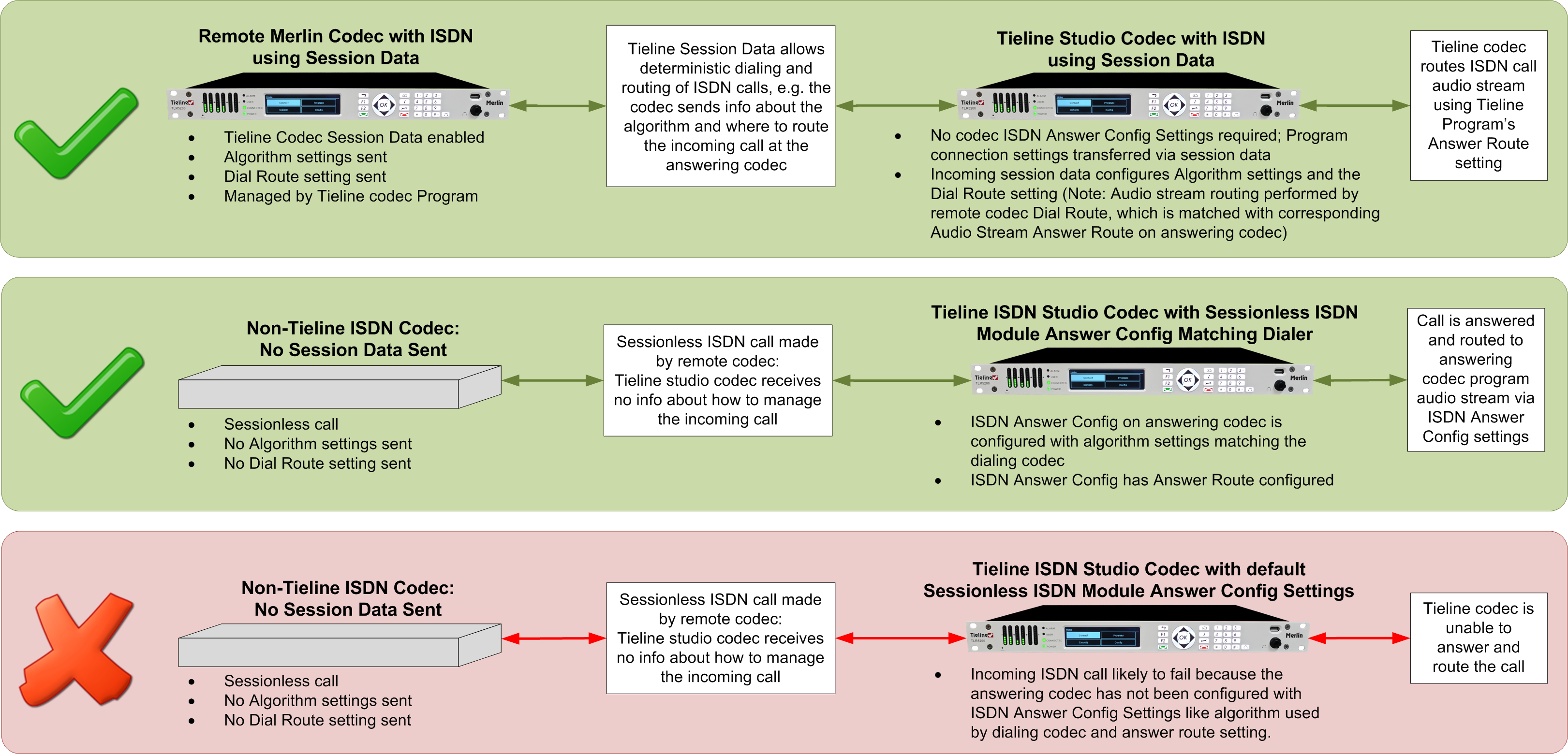
It is possible to save up to four different ISDN Answer Configs, which allow up to 4 ISDN B channels to be individually configured for unique answering behaviors. ISDN answering can be configured to suit:
•Hardware available in the codec, i.e. the number of B channels available.
•Expected dialing behaviors, e.g. if B channels should bond or not, and whether audio streams need to use Dial and Answer Route tags.
•The type of call being received by the codec, e.g. Tieline (with Tieline Session Data) versus non-Tieline sessionless calls.
•The algorithm expected when receiving sessionless calls.
Each of the four available Configs allows you to select which B channel or channels are used to answer a call or calls from incoming ISDN codecs. A maximum of up to 4 B channels can be selected if 2 ISDN modules are installed in the codec.
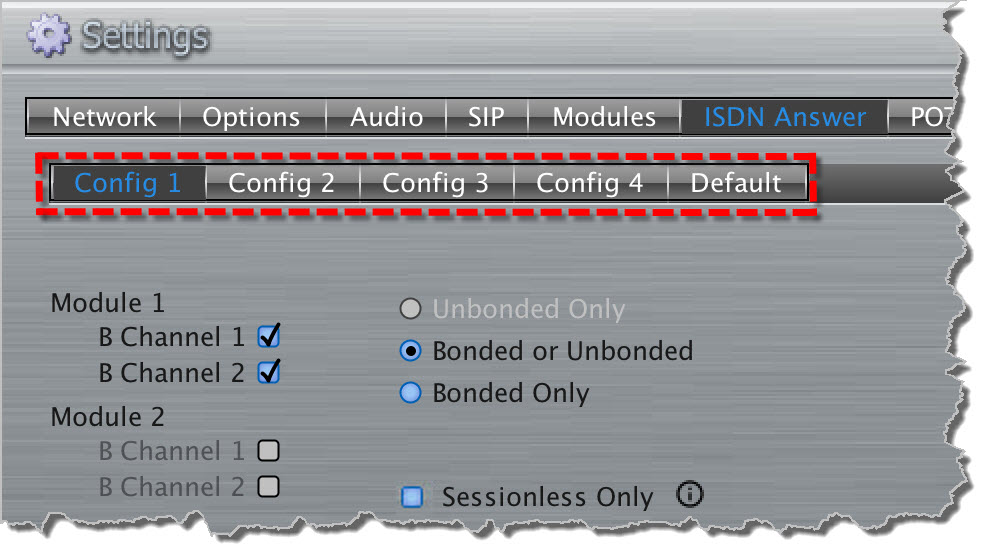
|
Important Note: B channels can only be selected once and are greyed out once they have been selected in one of the four ISDN Configs. |
Single B Channel Config
To use a single 64kbps B channel for a connection (e.g. a 1 x Mono Peer-to-Peer audio stream) simply select a B channel from those available and click the Save settings button. If only one B channel is selected then Unbonded Only is the default setting.
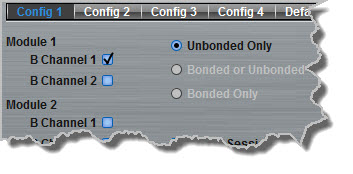
Multiple B Channel Bonding Config
A point-to-point audio stream can also bond multiple B channels to create higher bandwidth connections. In the following example, two B channels from Module 2 have been selected within Config 2. Note that B Channel 1 in Module 1 has already been selected in Config 1 and is therefore unavailable in Config 2.
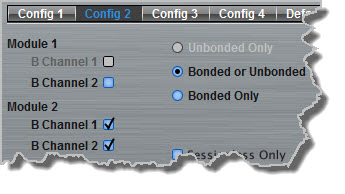
Configure the bonding setting that best suits the audio stream with which this Config will be associated. Bonded or Unbonded is the best setting in most situations. Note: Click the Save settings button to apply changes to the Config.
Bonding Setting |
Behavior |
Unbonded Only |
Unbonded single B Channel |
Bonded or Unbonded (May Bond) |
Calls using the same algorithm from the same Tieline codec, or sessionless calls, will attempt to bond when received. Calls using incompatible algorithms will not be bonded |
Bonded Only |
Will only bond compatible algorithms. This mode will reject incompatible calls which cannot be bonded, e.g. G.711 and G.722 |
Dial and Answer Route Settings in Programs
Dial Route and Answer Route tags allow you to associate a B channel (or channels) in a Config with a particular incoming audio stream from either Tieline or non-Tieline codecs. This is not necessary in simple point-to-point ISDN audio stream configurations, however it is very useful in multiple audio stream codecs using multiple B channels. When dialing Tieline to Tieline over ISDN using the Merlin or Genie family of codecs, you can configure a Dial Route in the dialing codec's program and a corresponding Answer Route in the answering codec's program. This will ensure a particular audio stream is routed between two codecs consistently.

In principle, the concept of 'routes' operates similarly to how audio ports are used to route multiple audio streams over IP. Selecting different IP audio port numbers allows users to define which incoming IP audio stream is routed to a specific answering audio stream configuration on the codec. This ensures inbound calls from multiple codecs can be consistently routed to the same answering codec audio streams, and therefore the same inputs and outputs. Following is an example of how to consistently route incoming ISDN audio streams using dial and answer routes.

Answer Routes for Non-Tieline (Sessionless) ISDN Calls
In some situations you may receive a call from a non-Tieline codec which doesn't support session data and Dial Route tags. In this situation you can still specify the audio stream Route on the answering codec using Config 1-4 in ISDN Answer. You can also select the default algorithm.
For example, if a call from a non-Tieline codec is received via B Channel 1 on Module 1 (i.e. no Dial Route has been specified in the dialing codec):
1.Select a Route for this B channel in one of the four Configs within ISDN Answer, e.g. Route1, then select the default Encoding algorithm to use when connecting (default setting is G.722).
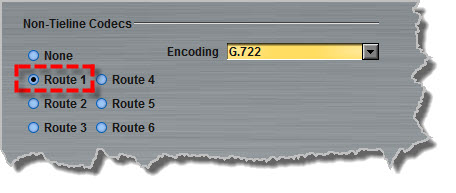
2.Click Save Settings to store the new Config settings.
3.This will associate the incoming call with a corresponding Answer Route configured in the answering codec program, e.g. Answer Route 1.
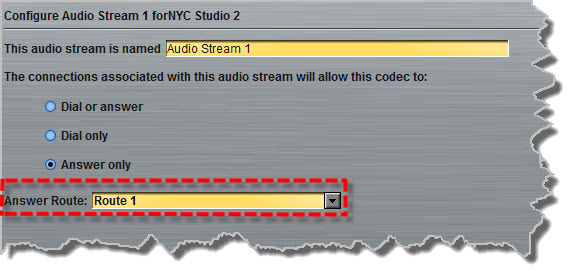
More detailed information about how to configure the codec to answer and route multiple sessionless ISDN calls is available in Using ISDN Answer Routes for Sessionless ISDN Calls. This uses examples to explain how to set up consistent deterministic routing of multiple incoming sessionless calls.
Answering both Tieline Session and Sessionless ISDN Calls
Leave the Sessionless Only checkbox in the ISDN Answering Config unchecked if the codec is expected to receive ISDN calls from Tieline codecs, or both Tieline and non-Tieline codecs (i.e. you are not sure which type of codec may call). In this mode, when the codec answers a call it initially expects to receive Tieline session data from the dialing codec and configure its own algorithm settings according to that. If it fails to receive Tieline session data within 5 seconds (i.e. a non-Tieline codec is calling, or a Tieline codec with session data disabled), it will use the settings in the ISDN Answering Config instead.
The following image displays how the answering codec will behave in this mode when receiving calls from both Tieline and non-Tieline codecs.

Allow Answering of Sessionless ISDN Calls Only
Select Sessionless Only when answering ISDN calls from non-Tieline codecs only. When Sessionless Only is selected, the codec will not wait to receive the Tieline session data. This reduces the time taken to answer an inbound sessionless call.
The following image displays how the answering codec will respond with Sessionless Only selected, i.e. calls from both Tieline and non-Tieline codecs are always regarded as sessionless.

Answering Multiple ISDN Calls from Tieline and non-Tieline Codecs
Tieline codecs capable of answering multiple incoming audio streams can be configured to answer both Tieline session data and sessionless ISDN calls at different times. They can also support connections using other transports such as IP or POTS. The following example shows how a Tieline codec can be configured to answer up to 4 separate mono ISDN calls at different times from both Tieline and non-Tieline codecs, as well as two mono IP audio streams.
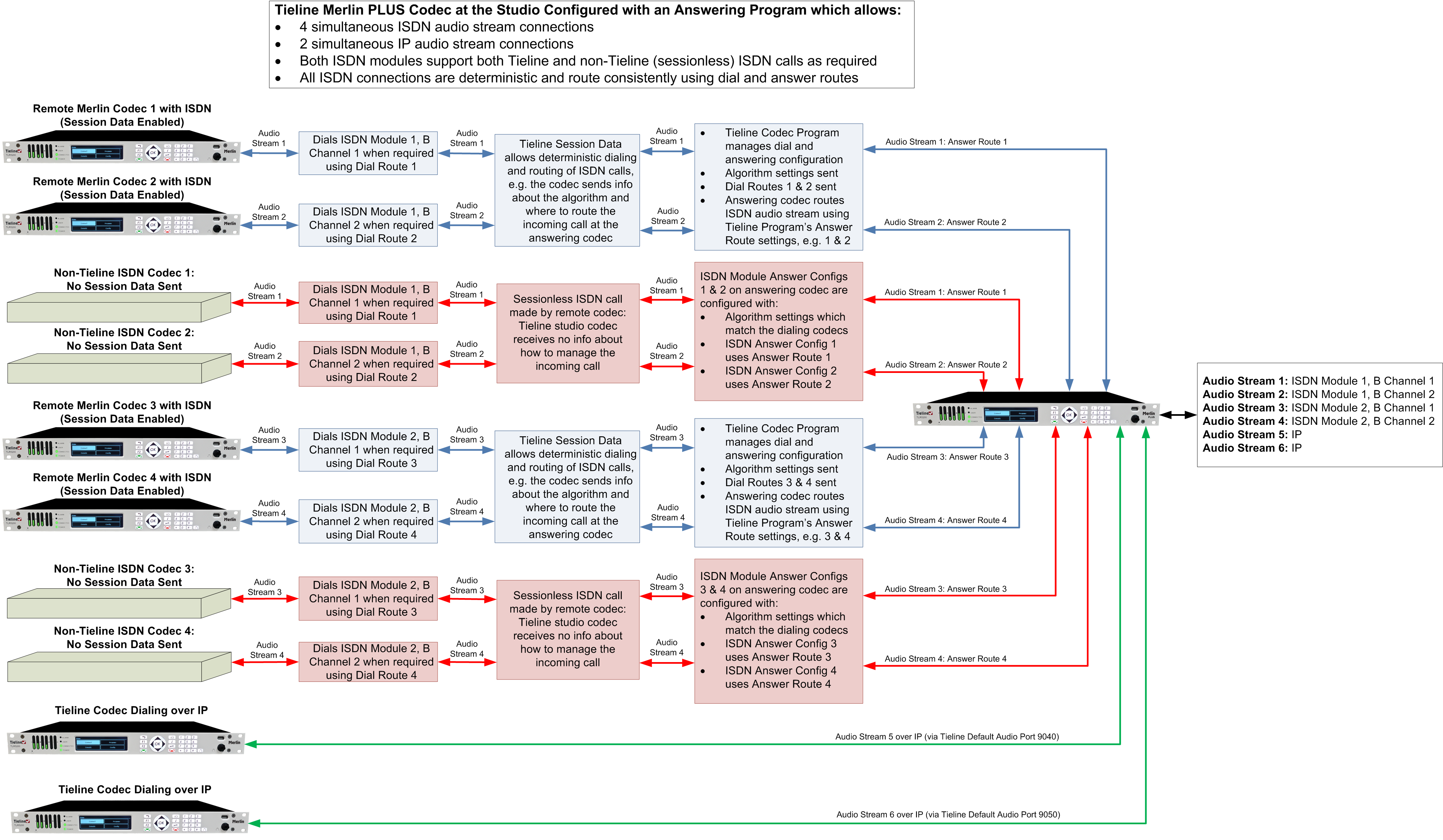
Default Answering Settings
When a B channel is not associated with a Config it inherits the following default settings:
•Tieline Session
•Unbonded
•G.722 algorithm
•Audio route: None
